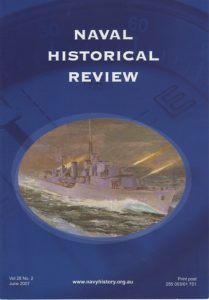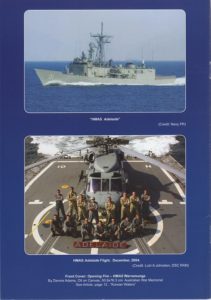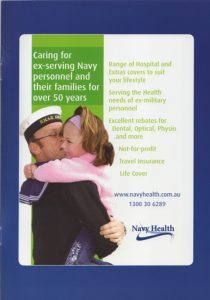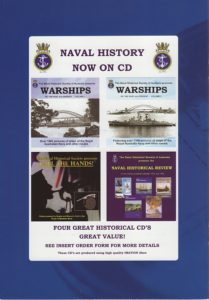On This Day
1946-1959 > Post WW2
On This Day - 1946-1959
- February 26, 1949
HMAS LABUAN, (landing ship tank), arrived back at Melbourne after a voyage to Antarctica supplying Australian bases.
- February 17, 1949
HMAS SHOALHAVEN, (frigate), relieved HMAS WARRAMUNGA, (destroyer), of occupation duties in the Far East. The handover took place at Shanghai, China. She then proceeded to Kure, Japan to operate with the British Commonwealth Occupation Force, but later returned to Shanghai on 24 March
- February 1, 1949
First C-47 delivered to the RAN FAA. A total of 4 were acquired and the last left service in 1974.
- January 24, 1949
The hulk of HMAS Adelaide was sold to Australian Iron and Steel Pty Ltd, her gear and equipment having been sold in 1947. On 1-2 April 1949 the hulk was towed by the tug HMAS Reserve to Port Kembla, where it was broken up.
- January 21, 1949
The landing ship, tank, HMAS LABUAN, (LCDR G. M. Dixon, RAN), sailed from Melbourne for Heard and Kerguelen islands in the Antarctic.
- December 16, 1948
The aircraft carrier HMAS SYDNEY, (CAPT R. R. Dowling, DSO, RAN), was commissioned. As HMS TERRIBLE she was laid down in Devonport Dockyard, Plymouth, England, on 19 April 1943, and was launched on 30 September 1944. Mrs Duncan Sandys performed the launching ceremony. At the end of WWII, TERRIBLE was laid up, unfinished. Purchased by the RAN, she was commissioned HMAS SYDNEY, at a re-naming ceremony performed by Mrs J. A. Beasley, (Wife of the Australian High Commissioner to the United Kingdom).
HMA LST 3017 was renamed HMAS Tarakan and HMA LST 3501 was renamed HMAS Labuan
- November 24, 1948
First CAC CA-16 Wirraway delivered to the RAN. Seven Wirraways were acquired by the RAN as training and general fleet support aircraft during 1948 – 1951 and then an additional ten in 1952-53 which were operated by 723 and 724 Squadrons at the Naval Air Station at Nowra until they were disposed of in 1957.
- October 6, 1948
First of 15 Spitfires (1 VC and 14 VIII Models) aircraft issued to RAN FAA, with the last was issued on 27/10/1948. They were trucked to Nowra for use as non-flying deck handling training aids and starting arriving from 7/10/1948.48. The Spitfire’s were taxiied around the dummy deck at Nowra and used to train ground handling staff. After serving their purpose the aircraft were deleted from charge in 1952. Finally, the Spitfires ended up on the fire-ground, where they were set alight to give fire crews exercise in extinguishing aircraft fires. The story goes that the remains were then bulldozed into the ground at the old rubbish tip.
- October 3, 1948
RADM J. A. S. Eccles, CBE, was appointed Flag Officer Commanding His Majesty’s Australian Fleet. His flagship was HMAS AUSTRALIA, (cruiser).
- October 1, 1948
The RAN took command of the British Commonwealth Occupation Force, (BCOF), naval shore establishment Kure, Japan. The base, then known as HMS COMMONWEALTH, became HMAS COMMONWEALTH.
- August 31, 1948
HMAS Albatross was commissioned on 31 August 1948
The decision to build an airfield on the land now occupied by the Naval Air Station was taken soon after WWII was declared in 1939. The Royal Australian Air Force (RAAF) occupied the new base on 7 May 1942 and was soon followed by the US Army Air Corps and the Royal Netherlands East Indies Air Force.
In 1944, the British Admiralty directed forces to the South-West Pacific necessitating shore base establishments in Australia to support the Royal Navy and its Fleet Air Arm. RAAF Base Nowra was considered ideal because of its proximity to Jervis Bay, which was large enough to accommodate the entire British Pacific Fleet. The Royal Navy’s Fleet Air Arm began operations at Nowra in late October 1944, and the base was renamed HMS Nabbington. In March 1946, the base reverted to RAAF control “to be retained but not maintained”.
In July 1947, the Commonwealth Defence Council approved the formation of a Fleet Air Arm which would be controlled and operated by the RAN. The initial planning included purchase of two aircraft carriers, aircraft and establishment of shore facilities. The carriers were named HMA Ships Sydney (III) and Melbourne (II), and the shore facilities were at Nowra.
- August 28, 1948
The 20th Carrier Air Group, (comprising 805 and 816 Squadrons), was commissioned at the Royal Naval Air Station, Eglinton, England. The air group was formed to be embarked in the RAN’s first true aircraft carrier, HMAS SYDNEY.
- August 20, 1948
HMAS ANZAC, (Battle class destroyer), was launched at Williamstown Dockyard, VIC.
- August 2, 1948
HMAS Katoomba paid off at Fremantle, having steamed 152,804 miles. On 2 May 1957 Katoomba was sold to Hong Kong Rolling Mills Ltd to be broken up.
- July 7, 1948
HMAS QUIBERON, (destroyer), encountered a typhoon near Guam, while en-route from Sasebo, Japan, to Manus Island, New Guinea. As well as the crew, there were 60 Australian soldiers and airmen onboard. The soldiers were returning to Australia from occupation duties in Japan, and the RAAF personnel were gaining sea experience before transferring to the newly created RAN Fleet Air Arm.
- July 2, 1948
The hull of the former HMAS VENDETTA was scuttled off Sydney Heads.
Last three WRANS, Betty Eastick, Shirley Bell and Margaret Bell, leave the service.
The Last RANNS members leave.- June 30, 1948
The RAN Nursing Service, (RANNS), which had been formed in October 1942, was disbanded. 57 uniformed nursing sisters had served in the RANNS during WWII. Civilian nurses were employed to provide care to RAN personnel from this time.
HMAS Deloraine paid off into Reserve at Fremantle. She had then steamed some 166,000 miles of which 129,000 miles were steamed on active service in World War II. She was sold to the Delta Shipping Co Ltd, Hong Kong, on 8 August 1956 for breaking up.
- June 21, 1948
HMAS BATHURST, (minesweeper), was sold out of service for breaking up in Sydney.
- June 16, 1948
A State of Emergency was declared in Malaya, as a result of action by Communist insurgents. The Malayan emergency lasted until 1960, and several RAN units were involved in patrols and naval gunfire support missions.
- June 8, 1948
HMAS Lithgow paid off to the Reserve Fleet at Fremantle, having steamed 178,000 miles. On 8 August 1956 Lithgow was sold as scrap to the Hong Kong Delta Shipping Company, Hong Kong
- June 6, 1948
The destroyer HMAS QUIBERON, (CMDR Bath, RAN), on patrol between South Korea and Japan as part of the British Commonwealth occupation Force, intercepted a Korean vessel with over 130 illegal immigrants onboard, as well as a quantity of drugs and other contraband. The vessel was taken in tow to the port of Taisha, (on the island of Honshu), where it and its contents were handed over to US military authorities.
- May 18, 1948
HMAS AUSTRALIA, (cruiser), took the disabled merchant vessel MADONNA in tow, in rough seas, near Lady Elliott Island, (off the coast of QLD), and towed her to Gladstone, QLD.
- April 30, 1948
HMAS MINDARI, (Gunnery Instruction Centre located at Woolloomooloo, Sydney), was decommissioned. In recent times the site was occupied by the Gunnery Art Gallery, which referred to its previous use.
- April 27, 1948
First of 12 RAAF Vultee Vengeances airframes were allocated to the RAN FAA at Nowra for use as Fire Fighting Training Aids.
- April 11, 1948
HMAS BARCOO, (frigate), was blown ashore at Glenelg Beach SA, during a gale. She was later re-floated without damage.



